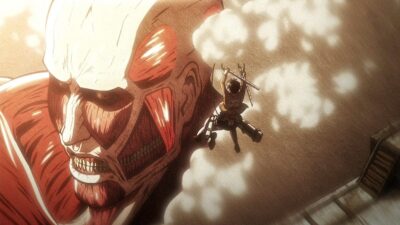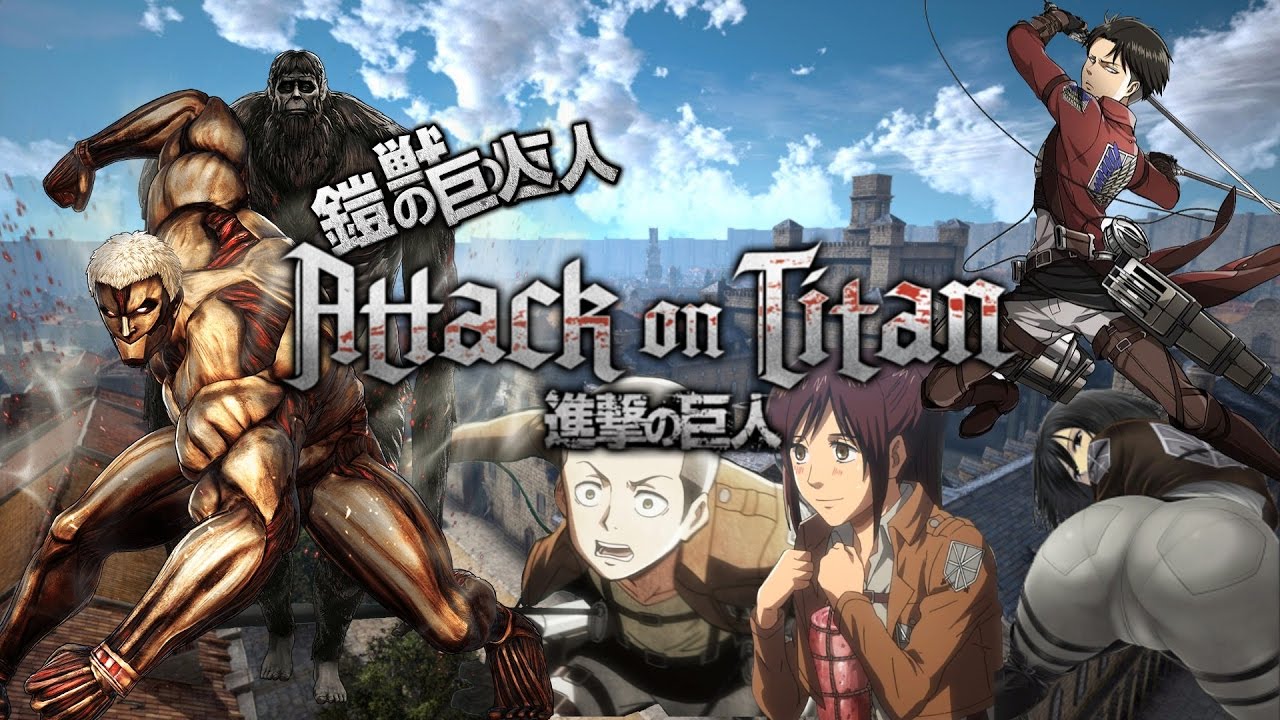The Colossal Titan is arguably one of the most iconic and fearsome Titans in Attack on Titan. Towering at an intimidating 60 meters, it is not only a
The Colossal Titan is arguably one of the most iconic and fearsome Titans in Attack on Titan. Towering at an intimidating 60 meters, it is not only a physical behemoth but also a pivotal element in the series’ intricate narrative and military tactics. In this article, we will explore the Colossal Titan’s strategic importance, its psychological effects on both allies and enemies, its evolution through the story, and why it remains a legendary figure in the Attack on Titan universe.
Must visit: trustedhealthcare

Introduction: More Than Just Size
The Colossal Titan’s most obvious feature is its gargantuan size — nearly 20 stories tall — dwarfing other Titans and human structures alike. But its significance goes beyond mere physicality. It embodies the overwhelming destructive force that can change the tide of war, a walking symbol of terror and chaos that alters the mindset of entire populations.
In the world of Attack on Titan, where humanity is locked behind massive walls to protect themselves from Titan attacks, the Colossal Titan represents a breach not just of physical defense but also of psychological safety. Its first appearance in the series sets the tone for the brutal struggle between humans and Titans and foreshadows the complex interplay of power, fear, and strategy that will unfold.
Strategic Significance of the Colossal Titan
1. Siege and Breach Tactics
The Colossal Titan’s primary tactical use is breaking through fortifications. Its enormous mass and strength allow it to destroy walls and gates that no other Titan could breach so efficiently. This is demonstrated during the fall of Wall Maria, where the Colossal Titan’s appearance marks a catastrophic failure of human defenses, opening the floodgates for other Titans to invade.
Because the walls in Attack on Titan are humanity’s last bastion, the Colossal Titan’s ability to penetrate these defenses effectively shifts the balance of power in battle. This makes it an essential weapon in Marley’s military strategy, aimed at destabilizing Paradis Island’s defense system.
2. Force Multiplier
The Colossal Titan’s breach serves as a force multiplier — its destructive entry allows other Titans and Marleyan forces to exploit the chaos. This synergistic use of the Colossal Titan ensures that its initial damage is compounded, creating opportunities for ground troops and smaller Titans to advance with less resistance.
3. Area Denial and Battlefield Control
The scalding steam emitted by the Colossal Titan can act as an area denial tool. Enemies attempting to approach or engage it are met with searing heat and thick clouds that obscure vision. This allows the Colossal Titan’s allies to maneuver and control the battlefield with greater ease, as opponents are forced to retreat or suffer burns and disorientation.
4. Explosive Transformations as Shock and Awe
The explosive transformation technique is a unique form of attack and psychological warfare. When the inheritor transforms into the Colossal Titan, the resulting explosion causes massive destruction over a wide radius, damaging enemy formations and infrastructure before the battle even begins. This method serves to shock, confuse, and demoralize opponents, giving the user a strategic upper hand.
Psychological Impact on Friends and Foes
1. Inducing Fear and Panic
For enemies, the sight of a 60-meter giant looming over the walls is terrifying. The Colossal Titan’s towering figure and sudden destructive force instill immediate fear, often leading to panic and disorder within the ranks. This psychological edge can be as decisive as physical power in battles.
2. Symbol of Hopelessness
The Colossal Titan also represents a symbol of near-insurmountable odds. Its appearance signals devastation and loss, shaking the morale of those defending the walls and reminding them of the futility of resisting such overwhelming power. This effect weighs heavily on the hearts of soldiers and civilians alike.
3. Burden on the Inheritor
While the Colossal Titan intimidates enemies, the burden it places on its inheritor is immense. Characters like Bertolt Hoover struggle with the psychological toll of wielding such destructive power. Bertolt’s internal conflict highlights the heavy responsibility and moral dilemmas faced by those who carry the weight of the Titan.
Later, when Armin inherits the power, this burden is seen from a different perspective — one of hope and strategic use. Armin’s character growth is deeply intertwined with his control over the Colossal Titan, demonstrating how power can also become a tool for protection and leadership rather than mere destruction.
Evolution of the Colossal Titan Through the Story
Bertolt Hoover: The Reluctant Giant
Bertolt’s tenure as the Colossal Titan is marked by hesitation and inner turmoil. Though a powerful weapon, Bertolt is often shown as a reluctant soldier, tormented by the consequences of his actions. His slow movements and frequent retreat reflect his desire to avoid unnecessary bloodshed despite his mission.
Bertolt’s internal conflict adds emotional depth to the Colossal Titan’s raw power, turning the Titan into a tragic figure of war — a massive force wielded by a person caught between duty and conscience.
Armin Arlert: The Tactical Mastermind
After Bertolt’s defeat, Armin inherits the Colossal Titan. Armin’s use of the Titan reflects a shift from destructive force to a calculated tool of war and survival. His intellect and strategic mind enable him to wield the Colossal Titan in ways that emphasize precision and restraint.
Armin’s journey with the Colossal Titan highlights themes of growth, sacrifice, and leadership. Through Armin, the Titan becomes a symbol of hope and resilience rather than pure destruction.
Anatomy and Weaknesses
Despite its formidable power, the Colossal Titan has vulnerabilities:
- Nape of the Neck: Like all Titans, the key weakness is the nape of the neck, where the human pilot resides. Precise and daring attacks can defeat even the Colossal Titan.
- Lack of Speed: Due to its enormous size, the Colossal Titan is relatively slow, making it vulnerable to faster and more agile opponents.
- Steam Emission as a Double-Edged Sword: While steam protects the Titan from close-range attacks, the energy expenditure to release it is considerable, sometimes leaving the Titan vulnerable after heavy use.
Understanding these limitations is crucial to both the characters within the story and the audience, reminding us that even overwhelming power is not invincible.
The Colossal Titan in Fan Culture and Legacy
The Colossal Titan has left a deep imprint on Attack on Titan fandom and beyond:
- Iconic Moments: Its first appearance breaching Wall Maria remains one of the most memorable scenes in anime history.
- Cosplay and Art: The Titan’s unique design inspires countless cosplayers and artists, highlighting its cultural significance.
- Symbolism in Media: Often referenced as a metaphor for unstoppable force or disaster, the Colossal Titan transcends its fictional roots to become a cultural icon representing the scale and horror of war.
Conclusion: A Titan Beyond Its Size
The Colossal Titan stands as a multifaceted symbol in Attack on Titan — a strategic weapon, a psychological terror, and a vessel for profound character development. Its overwhelming size and abilities make it a formidable force on the battlefield, while the personal struggles of its inheritors add emotional complexity.
From its role in the fall of Wall Maria to the evolution under Armin’s control, the Colossal Titan encapsulates the themes of power, fear, and hope that lie at the heart of Attack on Titan. Its legacy continues to captivate audiences, proving that sometimes the greatest giants are those who carry the heaviest burdens.
Frequently Asked Questions (FAQs)
Q1: Why is the Colossal Titan so important strategically?
Its ability to breach walls and create massive destruction makes it a key weapon in breaking enemy defenses and turning the tide of battle.
Q2: How does the Colossal Titan affect the morale of soldiers?
Its sheer size and destructive power instill fear and panic, often causing disarray among enemy forces and despair among defenders.
Q3: Who first uses the Colossal Titan in Attack on Titan?
Bertolt Hoover is the first modern inheritor of the Colossal Titan.
Q4: What are the main weaknesses of the Colossal Titan?
It is slow, has a vulnerable nape like all Titans, and its steam emission, while protective, drains energy and can leave it vulnerable.
Q5: How does Armin’s use of the Colossal Titan differ from Bertolt’s?
Armin uses it more strategically and thoughtfully, reflecting growth and a shift toward protecting humanity rather than causing indiscriminate destruction.
Q6: Can the Colossal Titan use its steam offensively?
Yes, the steam is hot enough to scald and repel enemies, making it an effective area denial tool.
Q7: What psychological burden do the inheritors face?
They struggle with the immense responsibility and consequences of wielding such destructive power, often leading to internal conflict.
Q8: Does the Colossal Titan have any special fighting techniques?
Its main tactics involve brute strength, explosive transformation, and steam emission rather than complex combat moves.




COMMENTS